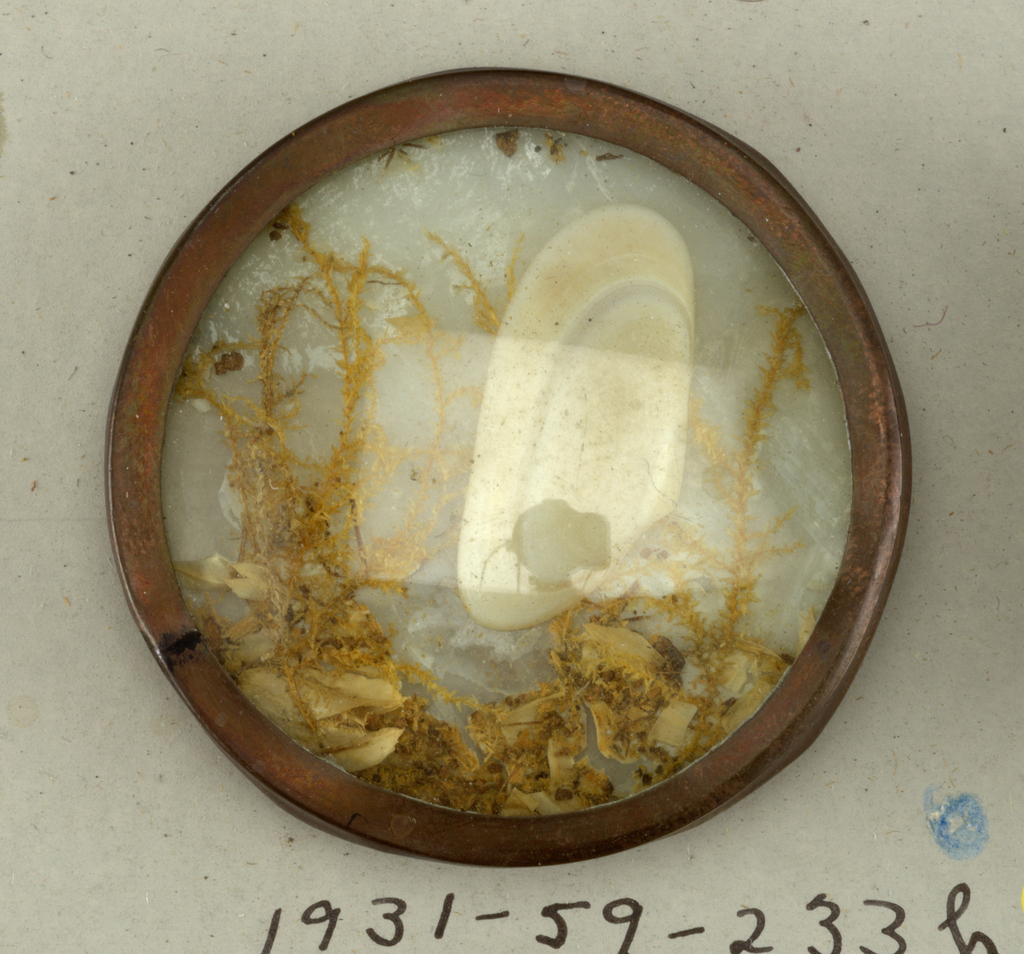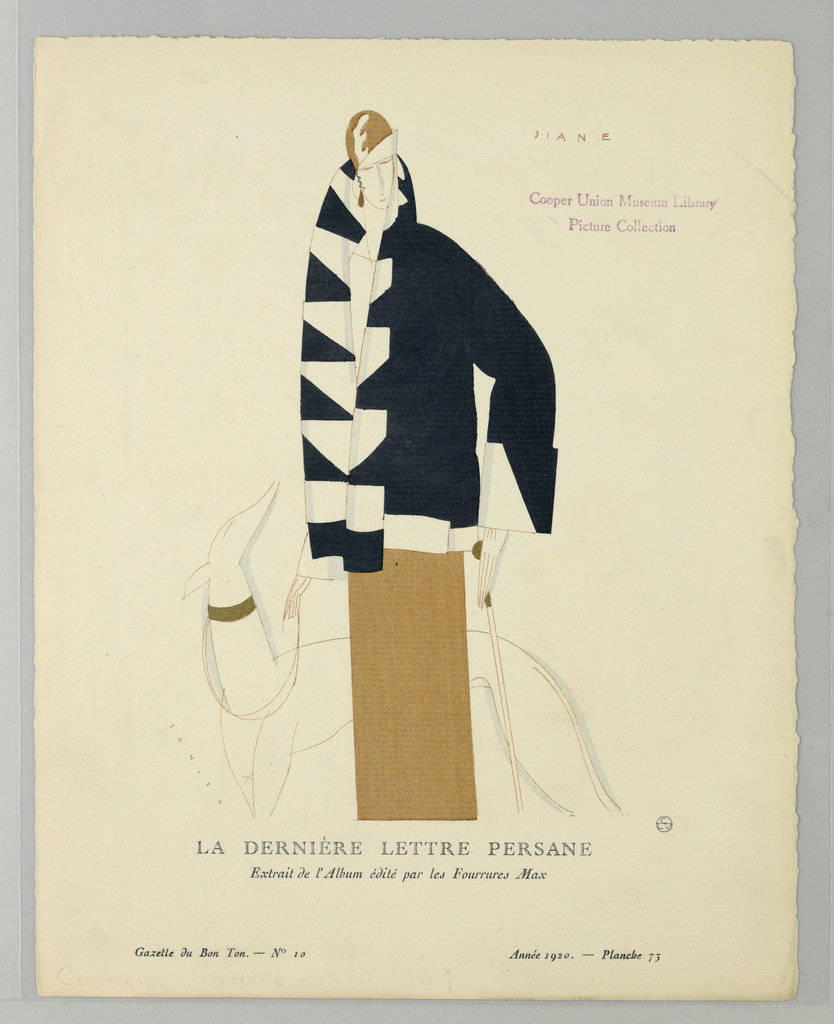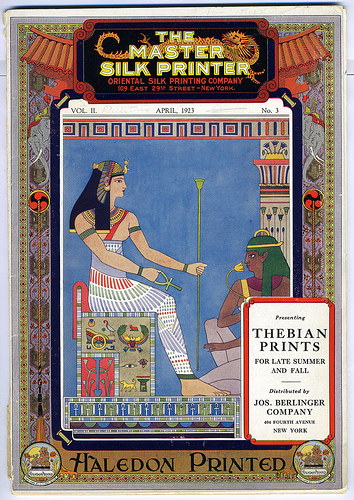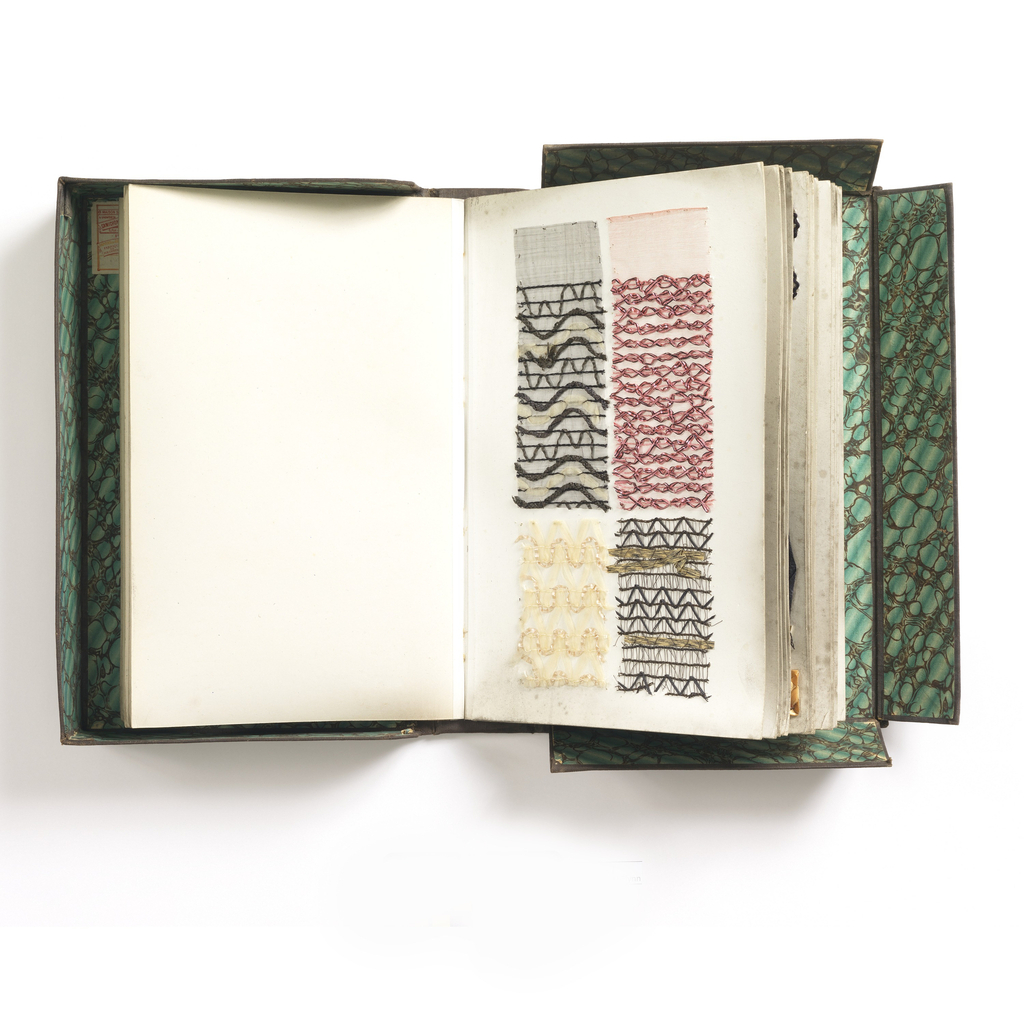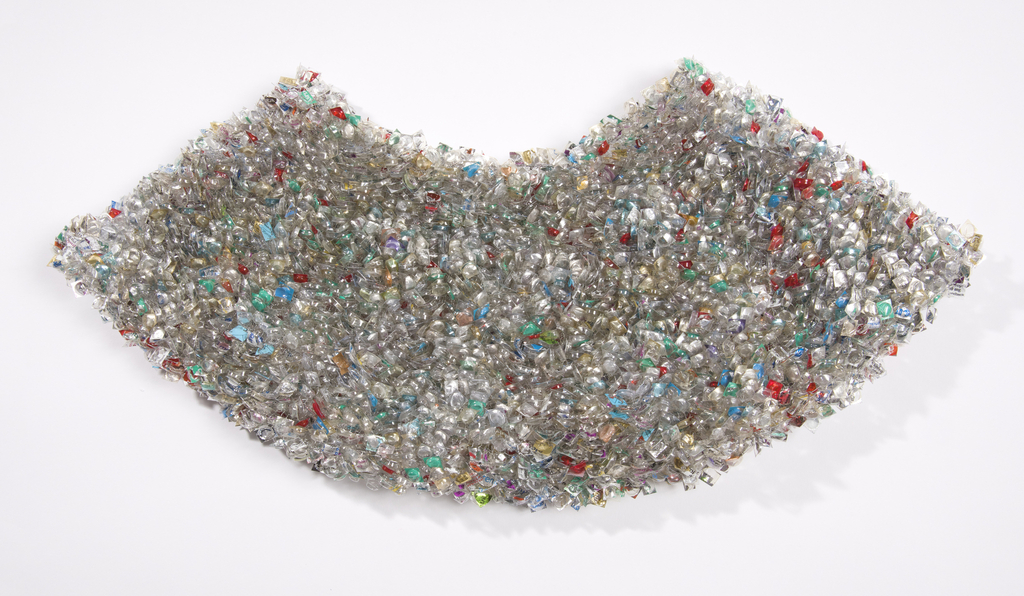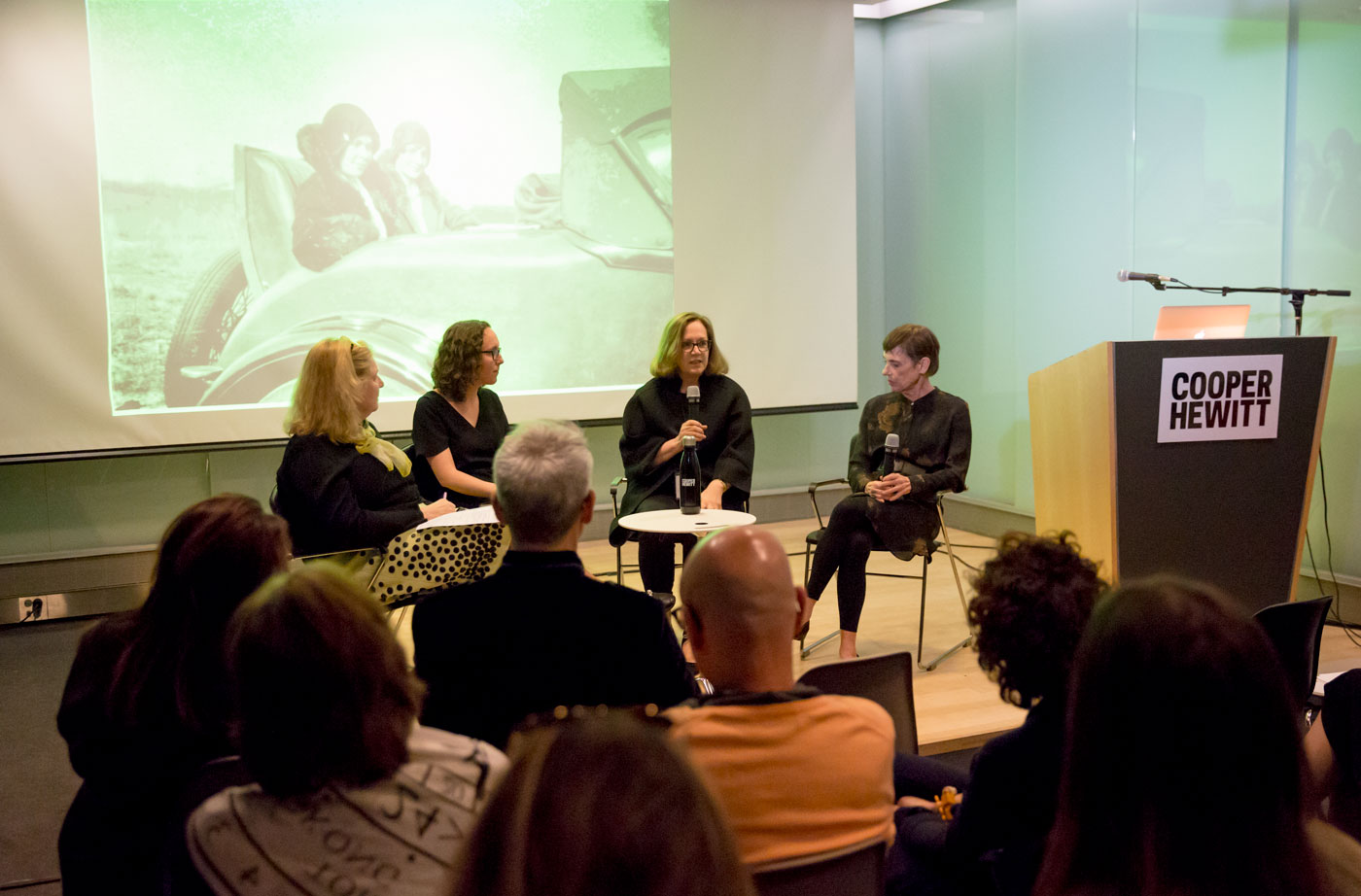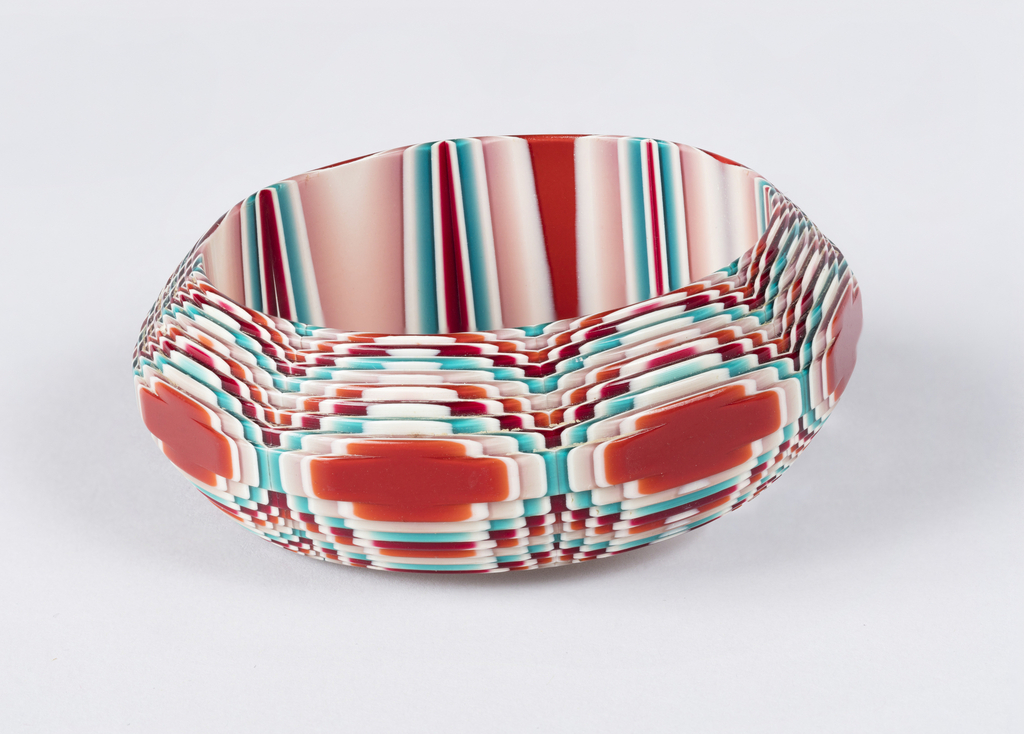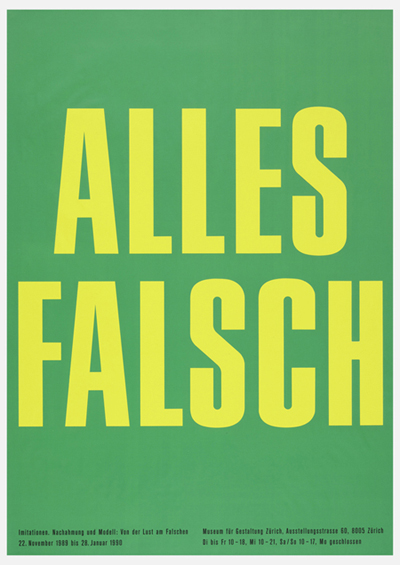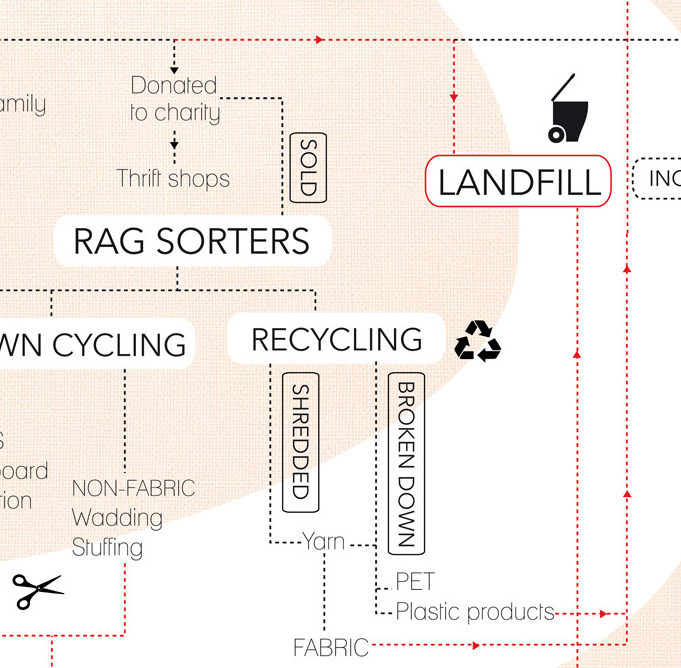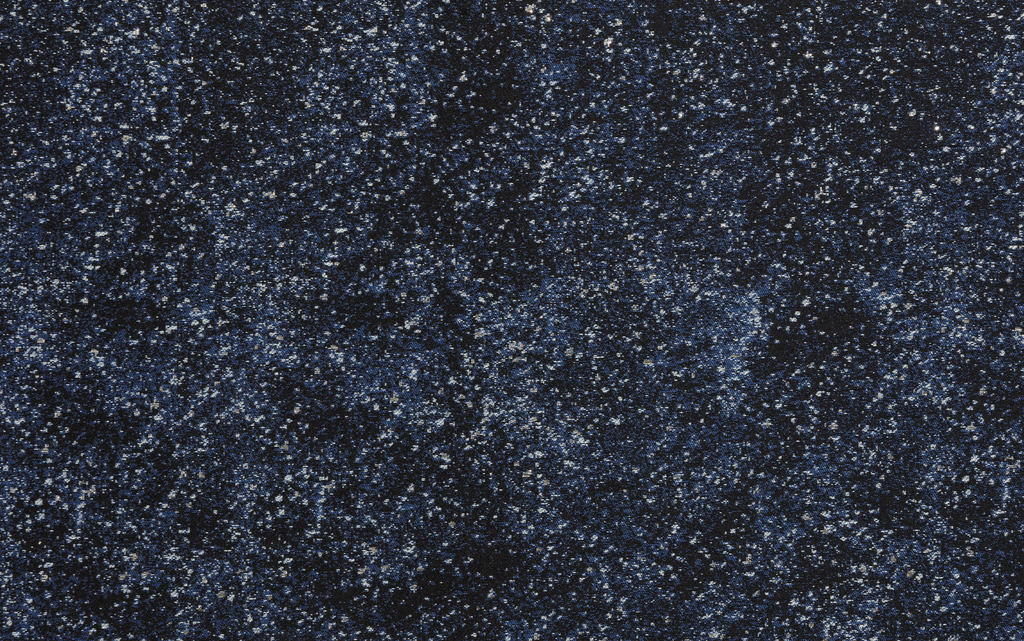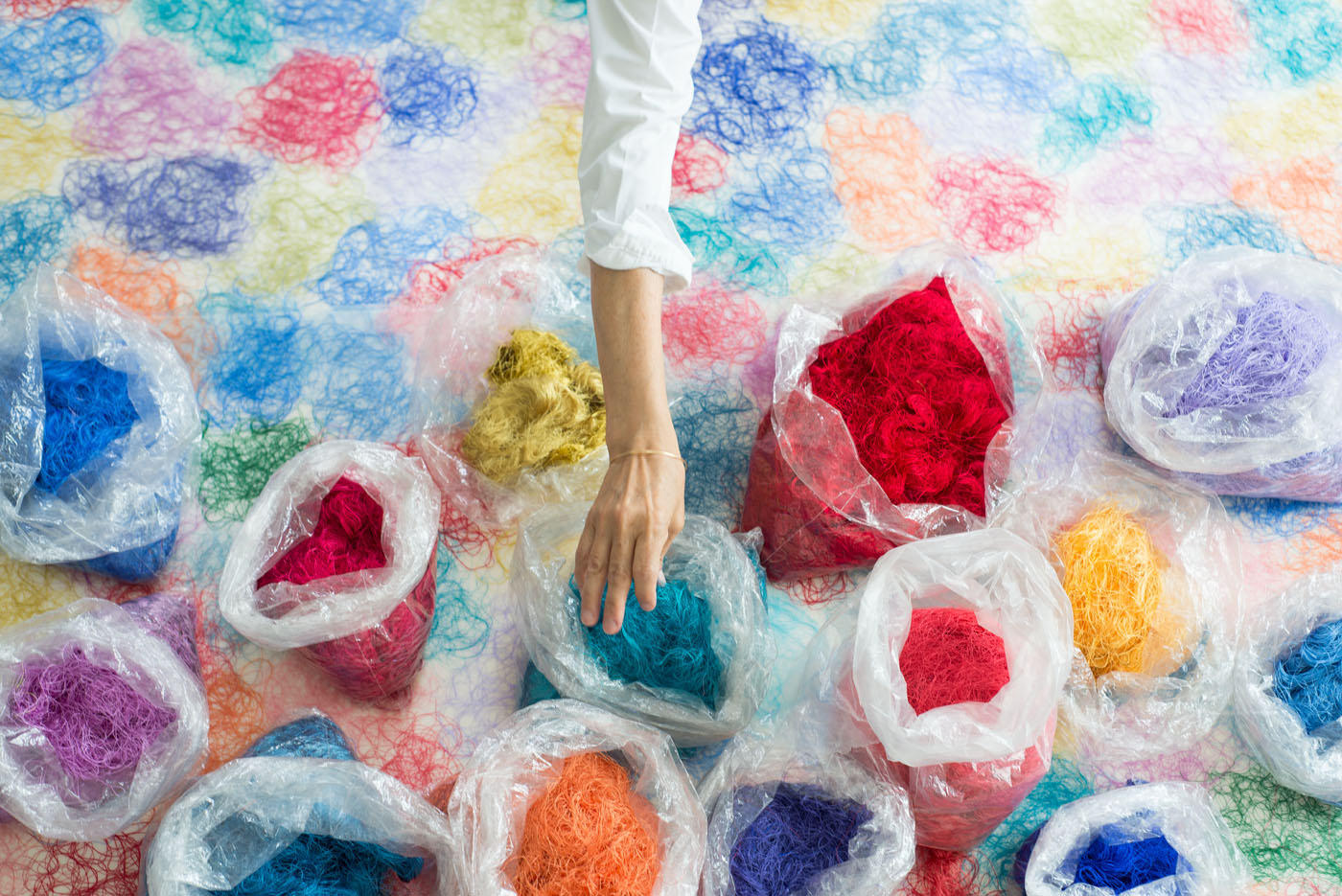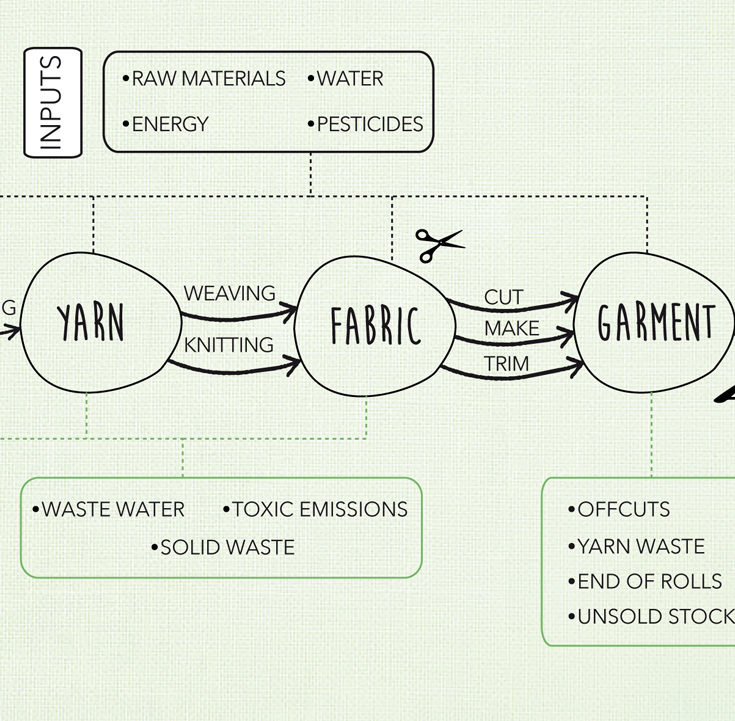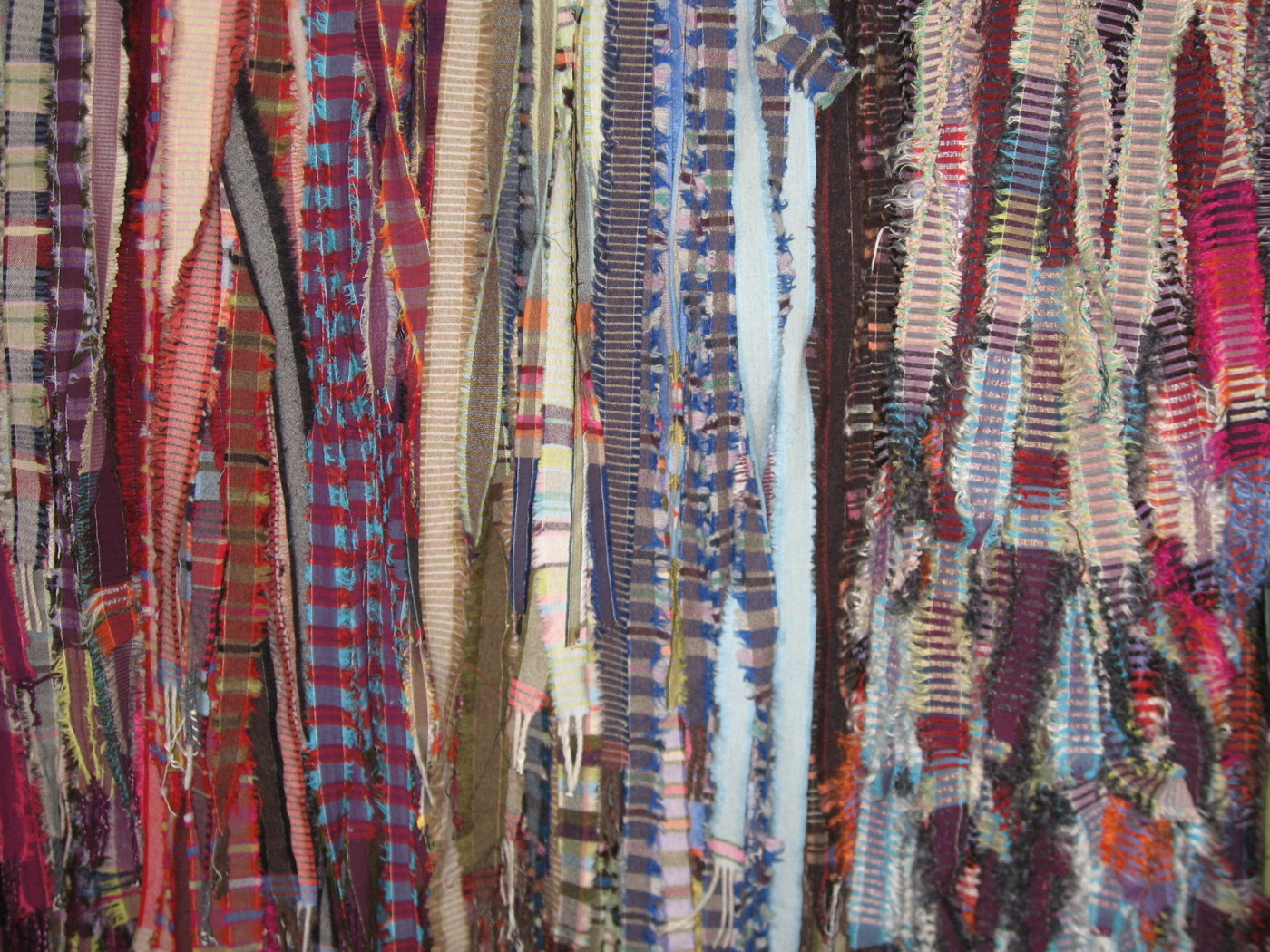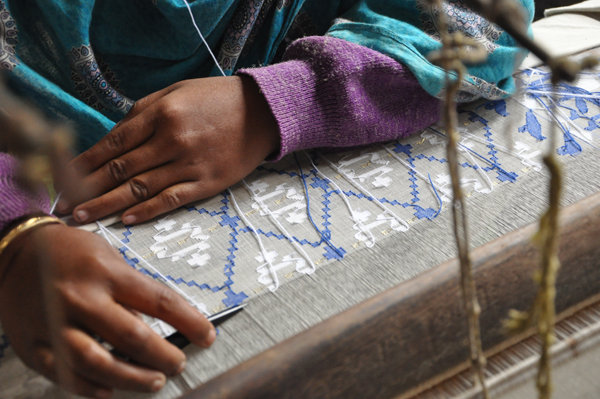This button, from a set of nine, offers the viewer a chance to peek into the age of Enlightenment, a period of time when the human mind was breaking free from the constraints of the Church and the limitations of the Middle Ages. The Renaissance, primarily spanning the fifteenth through sixteenth centuries, is often thought...
“Now that fashion has become an art, a fashion gazette must also be an art revue. So it will be with Gazette du Bon Ton.”—Lucien Vogel, 1886–1954 Pictured alone against a bare backdrop, the young woman of this fashion illustration sports a cloche hat and a sleek black and white coat with a voluminous collar...
Elizabeth Broman discusses the 1920s trade catalogue The Master Silk Printer.
Sample books, originally created for commercial, educational, or scientific purposes, have become valuable guides to understanding the products, technological processes, materials, aesthetics, provenance, and use of objects manufactured in the past. Both the Museum and Design Library have extensive collections of sample books containing diverse groups of samples ranging from paint chips to lace. This...
At first glance, this necklace catches the light and each individual bead shimmers like a mirror. Upon closer inspection, however, it is discovered that instead of beads, it is made up of small square pieces of medical pill blister packages, each loosely woven on thin, metal wire. This necklace was designed by Verena Sieber-Fuchs, a...
In conjunction with The Jazz Age: American Style in the 1920s, a Design Talk with fashion historians Caroline Milbank and Jan Reeder on the revolutionary fashion trends that marked the era, with special emphasis on style in New York and the influence of Paris.
Lea Stein’s laminated celluloid jewelry designs joyously celebrate the materiality of plastic. Fusing together thin sheets of brightly colored acetate to create elaborately layered designs—seen here in this bracelet from 1970—Stein and her husband, Ferdinand Steinberger, developed this process in the late 1960s. Steinberger was a chemist who invented this new chemical process, which allowed...
What happens to all of our clothes after we no longer want them?
Starry Indigo embodies two vital Japanese textile traditions which derive from the kimono: indigo dyeing which can achieve the darkest and lightest of blues through repeated dipping in the dye vat, and woven silk accentuated by luxurious metallic coated washi thread (silver in Starry Indigo). The appearance of starlets twinkling in a midnight blue sky...
The fashion and textile industry is an intricate business. Do you know how it works?
Reduce, recycle, and reuse are the three words to live by when thinking of how to limit waste generation and the human footprint on the environment.
